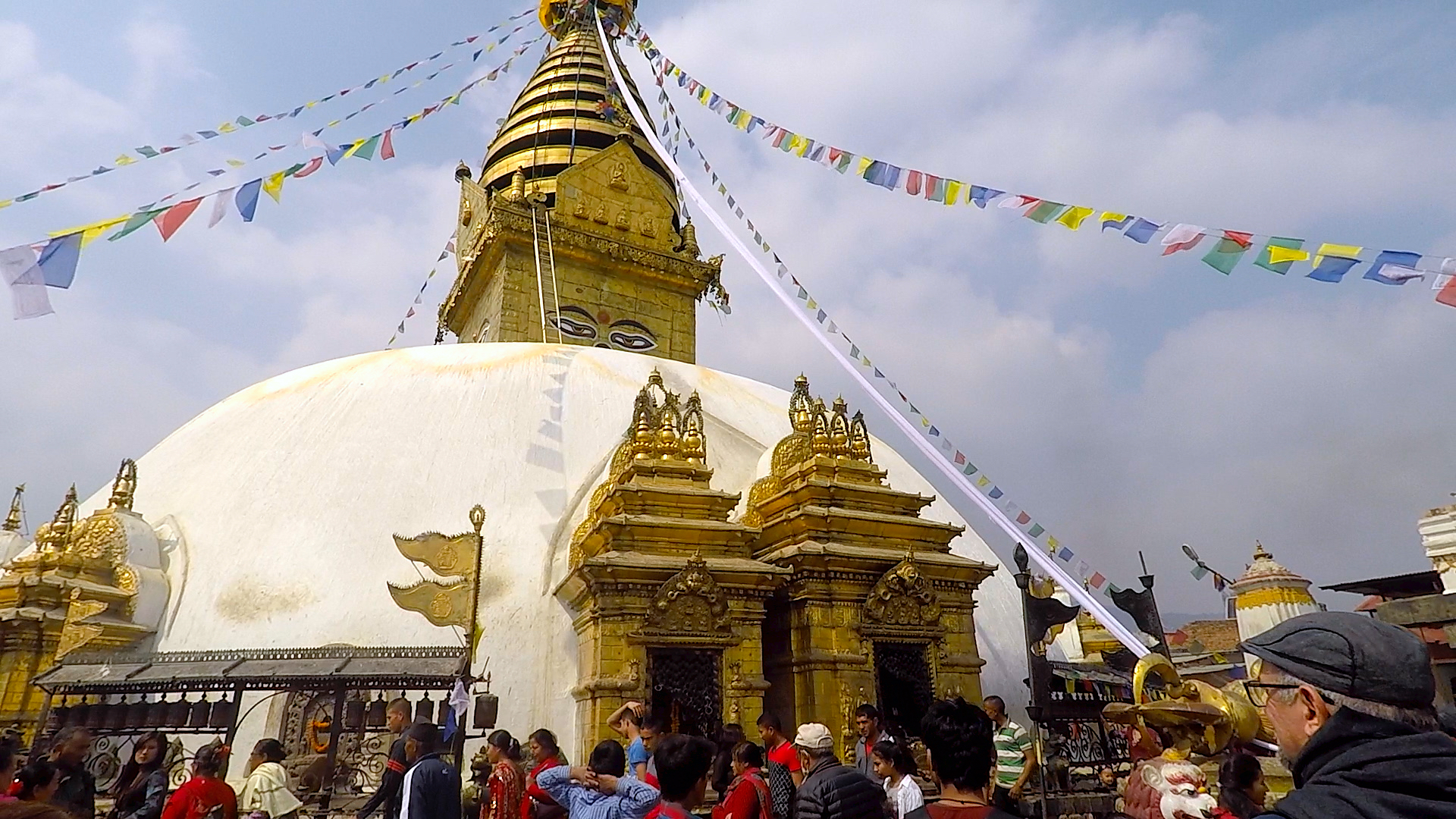Swayambhunath Stupa
Swayambhunath is an ancient religious architectural stupa atop a hill in the Kathmandu Valley, west of Kathmandu city. A UNESCO World Heritage since 1979.
Each morning before dawn hundreds of Buddhist (Vajrayana) and Hindu pilgrims ascend the 365 steps from the eastern side that lead up the hill, passing the gilded Vajra (Tibetan: Dorje), thunderbolt sceptre, and two lions guarding the entrance, and begin a series of clockwise circumambulations of the stupa.
Swayambhu occupies a central position, it is probably the most sacred among Buddhist pilgrimage sites in Nepal, founded about the beginning of the 5th century CE. For Tibetans and followers of Tibetan Buddhism, it is second only to Boudhanath.
The complex consists of a stupa, a variety of shrines and temples. The stupa was completely renovated in May 2010, the dome re-gilded used 20 kg of gold.
The first sight on reaching the top of the stairway is the Vajra, a thunderbolt sceptre. Behind this Vajra is the vast, round, white dome of the stupa, at the top of which two giant Buddha eyes which represent Wisdom and Compassion. Above each pair of eyes is another eye, the third eye. It is said that when Buddha preaches, cosmic rays emanate from the third eye which acts as messages to heavenly beings so that those interested can come down to earth to listen to the Buddha. Between Buddha’s painted eyes and eyebrows, the number one in Devanagari script is painted in the fashion of a nose, represents the unity of all things existing in the world as well as the only path to enlightenment through the teachings of Buddha.
The dome at the base represents the entire world. When a person awakes (represented by eyes of wisdom and compassion) from the bonds of the world, the person reaches the state of enlightenment. The thirteen pinnacles on the top symbolize that sentient beings have to go through the thirteen stages of spiritual realizations to reach enlightenment or Buddhahood.
According to mythology, the entire valley was once filled with an enormous lake, out of which grew a lotus. The valley came to be known as Swayambhu, meaning “Self-Created.” The name comes from an eternal self-existent flame (svyaṃbhu) over which a sūpa was later built.
Swayambhu is also known as the Monkey Temple as there are holy monkeys living in the north-west parts of the temple. They are holy because Manjushri, the bodhisattva of wisdom and learning was raising the hill which the Swayambhu Stupa stands on. He was supposed to leave his hair short but he made it grow long and head lice grew. It is said that the head lice transformed into these monkeys.
Manjusri had a vision of the Lotus at Swayambhu and travelled there to worship it. Seeing that the valley can be a good settlement and to make the site more accessible to human pilgrims, he cut a gorge at Chovar. The water drained out of the lake, leaving the valley in which Kathmandu now lies. The Lotus was transformed into a hill and the flower became the Swayambhu stupa.







